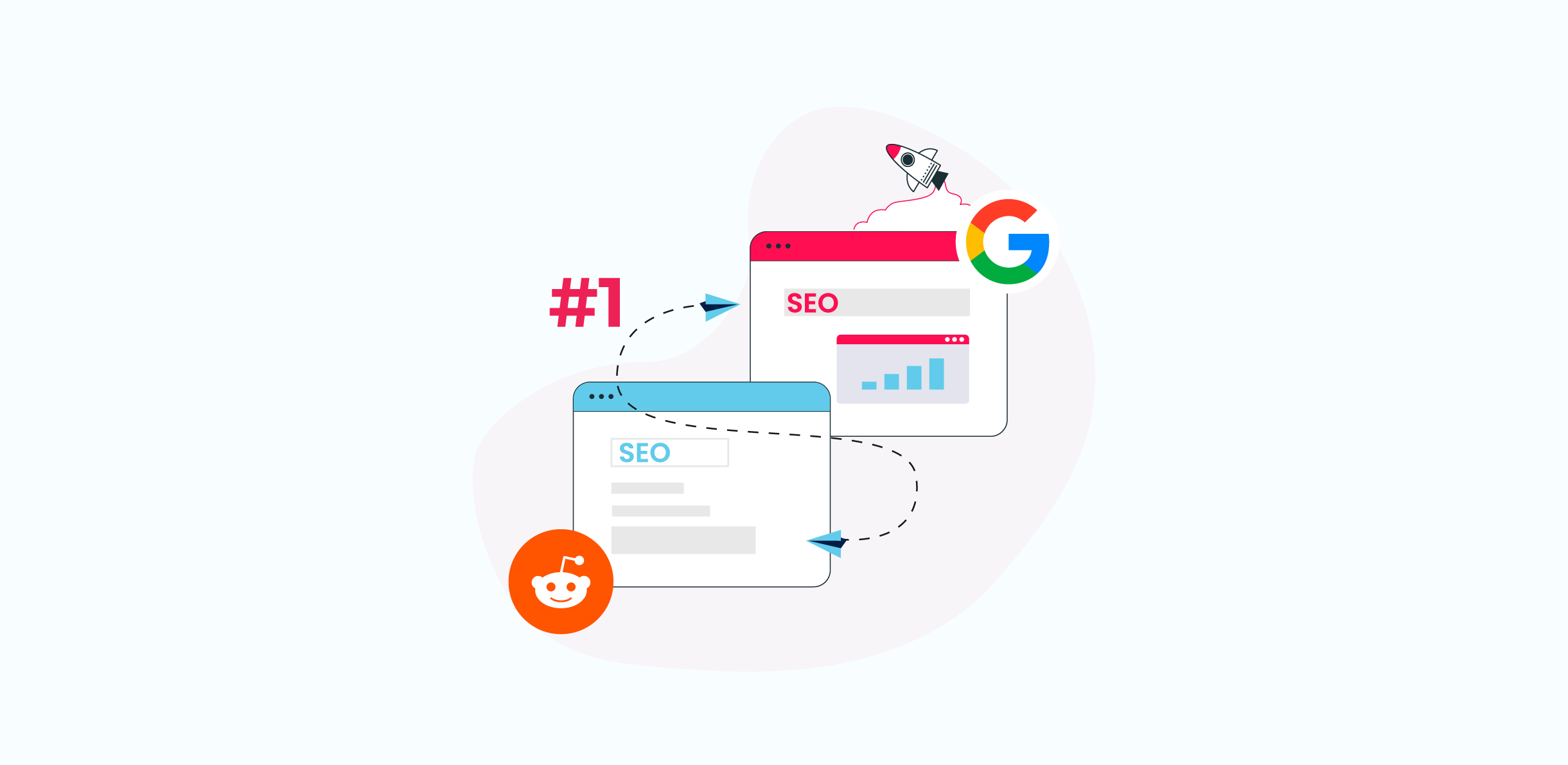Why Reciprocal Link Building is Not a Good Strategy in Modern SEO
Introduction:
When it comes to link building, there are often cordial exchanges between websites to help one another. And while this may not pose a problem if it’s done naturally, reciprocal link building may not be a very good idea to rely on in the long run. So, today, let’s discuss why Reciprocal Link Building is not a good strategy for Modern SEO.
But before that, let’s first define reciprocal link building.
What is a Reciprocal Link?
A reciprocal link comes into existence when two websites link to each other. Although this tends to occur naturally as well, websites also use reciprocal link building to garner authority from each other with the plan to rank better via manipulation.
In effect, there are three types of scenarios where reciprocal links occur.
- Natural Links: In this scenario, there is no formal agreement between the websites, and the reciprocal links occur naturally. This can often happen with websites working in the same niche, where one might quote the other in an article, and the other might quote the first one in a similar context. For example, if we quote Ahrefs in our blog piece and then create a case study, then there is a chance that we are quoted based on our data by Ahrefs.
- Reciprocal Links: In this scenario, there is an agreement between the two websites, and the links are reciprocated (exchanged) in order to get more traction from each other’s audiences. The websites aim to get more eyeballs while providing value to the users.
- Excessive Link Exchanges: This occurs when websites exchange links with the sole purpose of manipulating search engine rankings via link juice.
Google has developed its algorithms to the point where identifying unnatural links is a breeze for them, and this, at times, can lead to a manual action. This is where Google can easily observe that two websites are routinely linking with one another, and it could have severe consequences.
Google’s Algorithm has Evolved.
While Google has been against reciprocal links for the last two decades, in the early 2000s, the algorithms weren’t powerful enough to recognize unnatural links like they are today. It all started with the Penguin Update, which focused on targeting link spam, eventually becoming a part of the core algorithm. These days, Google has evolved its algorithms such that they are proficiently focused on:
- Link Scheme and Manipulation Detection
- Emphasis on Link Quality over Quantity
Link Schemes and Manipulation Detection
In the basic sense, Link Schemes refer to practices against Google’s guidelines, where websites garner backlinks via black hat or shady tactics to get better rankings. However, Google has become quite adept at identifying link schemes, especially thanks to its AI-based Link Spam Detection system, SpamBrain.
Moreover, thanks to the API leaks we also know that Google checks links for authenticity on both sides. This means that a link is analyzed on the page it’s placed as well as the destination page. With these automated processes in place, Google’s Manipulation Detection has gone to another level, such that Link Spam is identified and penalized regularly.
Emphasis on Link Quality over Quantity
The emphasis on link quality has always been there. Google’s focus on Link Quality over Quantity is apparent when John Mueller himself has stated clearly that the number of links doesn’t matter. In the same blog, the importance of quality over quantity is also mentioned in a quote by John Mueller.
Here are all the reasons why you shouldn’t rely on Reciprocal Link Building alone:
Reciprocal Link Building Brings a Higher Risk of Google Penalties
In one of our previous articles, we mentioned that the Link Spam Penalty is among the most common manual actions Google has implemented. Furthermore, Google has clearly outlined that excessive link exchanges fall under link spam.
Manual Actions for Link Manipulation
If two websites are exchanging links exclusively for link manipulation, then rest assured that Google will find it out and probably hit one or both the sites with manual action.
This could have a plethora of consequences, depending on the severity of the violation and counts of it. This is the primary reason that reciprocal link building has no place in modern SEO and why websites have to ensure that a backlink placed is justified with the content and makes sense within the context.
A manual action for link spam is something good SEOs almost never see, as they work towards an optimized website with a natural backlink profile.
Loss of Trustworthiness
A website focused on reciprocal link building is also one where the focus becomes ranking instead of providing helpful content. Thus most of the content is basically fluff and not actually helpful to the user.
Moreover, due to these violations, the website also loses its trust in Google, especially if a manual action has been applied before. The harm to SEO will remain even if the website resolves the problem and the reconsideration request removes the penalty. What it means is that the website will not only have lost rankings but will have to try even harder to get back to the previous position.
Reciprocal Links Result in Diluted Link Equity
Reliance on reciprocal link building also means that the website restricts its links to a limited number of websites. This can lead to a couple of problems even for the link juice.
No Unique Value Transfer
One of the reasons it is necessary for a healthy backlink profile to have a high range of unique referring domains is because in that case, multiple links come up with unique value transfer. Reciprocal link building means that link equity or link juice that comes from every link loses its value. With little or no link value transfer actually happening the whole point of link building can become moot.
Poor Internal Link focus
Since websites practicing reciprocal link building are only prioritizing links from their partner websites, they often forego internal linking, which is important for on-page optimization. Poor internal link focus can also mean that the user on the website leaves with the outbound link rather than staying.
Reciprocal Links Often Appear Unnatural
Imagine opening a blog and then bouncing back and forth between just two websites without finding the solution you were looking for. Not a fun user journey is it? It’s basically the same with Google.
Pattern Detection
Google’s algorithms can acutely identify the pattern, specifically if two websites are constantly linking to each other. This is what Google means when it has labeled excessive reciprocal link building as link spam.
The truth is Google can easily see a website’s linking pattern via its backlink profile. And if such irregularities keep coming up, the risk of a manual action penalty increases until it becomes a certainty.
Unnatural Link Growth
Using excessive reciprocal link building means that websites in partnership do it constantly and consistently. This can lead to an unnatural link growth over a short period of time. Although there is no set rule by Google on getting too many links in a short time period, reciprocal links are already flagged. So, getting too many of them in a short span will raise some alerts with Google.
Reciprocal Links can Damage Your Website’s Reputation.
Reciprocal links being built as a result of partnership means that the main priority of the content was to provide authority, rather than solve a problem. This would mean that your users won’t be finding solutions but rather simply pages and pages.
Loss of Authority in Your Niche
The whole goal of publishing content and guest posts is to garner authority in your niche. However, if users observe that the content’s primary focus is only to get them to another page, then they won’t return to the website to look for solutions. The loss of authority in the niche, thus, can be detrimental to SEO.
Poor User Experience
An article providing only a backlink to another webpage without solving the user’s problem showcases a poor user experience. Now, poor user experience can bring a plethora of problems for a website’s SEO. But here are some ideas on how to deliver an outstanding user experience.
Reciprocal Links Lack Long-term Benefits
Although reciprocal links might look lucrative in the short run, reliance on them in the long run (especially if a website has partnered up with other sites) can be quite harmful to SEO.
Links have a Short-Lived Impact.
We’ve already mentioned that Google has now gained expertise in identifying link spam via link exchanges. and, even if a website is able to get away unscathed from the previous updates, it is only a matter of time before Google comes up with an update that further strengthens the algorithm against link spam.
So, if a website garnering reciprocal links may seemingly do well in SEO today, it will only be so until Google’s algorithm sifts it out.
No Content Value Addition
Links received from exchanges are different from the real ones that are earned via guest posts after authentic outreach. Real backlinks aren’t just placed on a webpage but are actually earned through well-researched content that meets Google’s EEAT standards.
Moreover, where reciprocal links aim to bounce the user away, authentic guest posts only use backlinks to either allow the user to have an in-depth understanding or lead them toward their required solution.
Reciprocal Links Harm Partner Sites Too
Google’s API leaks have informed us that Google looks at both ends of a backlink. This means that if a website does link exchanges with a partner, then Google can easily make the connection and note the link exchanges.
Since excessive link exchanges would mean that websites are colluding for rankings, Google might actually penalize them both for link spam. Although the level of penalty might be different, manual action is something an SEO never wishes to see, which is why it is always best to only link with websites that follow Google’s guidelines. Also, a simple audit of the external website before outreaching can provide a clearer picture for you. Here is how you can do a basic website SEO audit via ahrefs.
Negative Impact on Partner’s SEO
If Google finds out that a website is in partnership for link exchanges, it can label all the backlinks as spam and simply negate all the authority that those links pass. This would mean that even if the partner website is not hit by a manual action, it still may lose all its authority and consequently lose out on rankings too.
Reciprocal Links Can Negatively Impact User Engagements.
We’ve already discussed how the user experience is harmed due to pages with reciprocal links having low-quality content. Now, let’s have a look at how bad user experience can be extremely problematic for the website’s engagement metrics.
Increased Bounce Rate
The presence of external links in your content means that there is a chance that the user might bounce away to the external website. However, in most cases, external links in a content piece are only meant to enhance the user’s knowledge without deviating from the topic at hand.
Since websites using reciprocal links only use the content to lead the user to an external webpage, the backlinks are what the content is focused on. In other words, the bounce rate for a website that has partnered for link exchanges could be extremely high.
Lower Click-Through Rates (CTR)
Moreover, the content leading the user to an external site would mean that the website itself will have a low CTR. In other words, a user of an article with a reciprocal link will only be guided to click the backlink instead of having a user journey that guides them through the website itself.
There are Better Alternatives than Reciprocal Link Building
Even though some may think that reciprocal link building is a lucrative strategy, in truth there are many better alternatives that could not only help you earn better backlinks but also help gain more traffic.
Guest Posting
Guest Posting is where you outreach to a website that produces content in your niche and offer them your content that has a backlink to your website. This way, to get a backlink on a reputed website, it becomes imperative to have impeccable-quality content.
In fact, this is exactly what we do on your behalf when you go for our link building services. With genuine outreach and authentic content, the backlink you earn not only enhances your authority but also provides relevant traffic.
Digital PR
Digital PR is when your brand has achieved or wants to announce something that is worth showcasing to the world. You then reach out to news and publication websites to tell them about your achievement/announcement. The major difference between guest posting and Digital PR services is the content objective and the type of websites reached.
Content Marketing
Although creating content and publishing on your website might seem like a long stretch, getting backlinks becomes a breeze if your content is link-worthy. Brian Dean actually earned more than 5,560 backlinks to a single article by just quoting statistics!
The more powerful content you can produce, the more other websites will be likely to link to you. You can even create evergreen content to stay relevant for a longer time, which will bring continuous traffic!
Conclusion:
We hope that you’ve learned a lot about reciprocal link building today and why it is not a good strategy for Modern SEO. If you’d like to learn more about SEO and Link Building, check out our blog.






